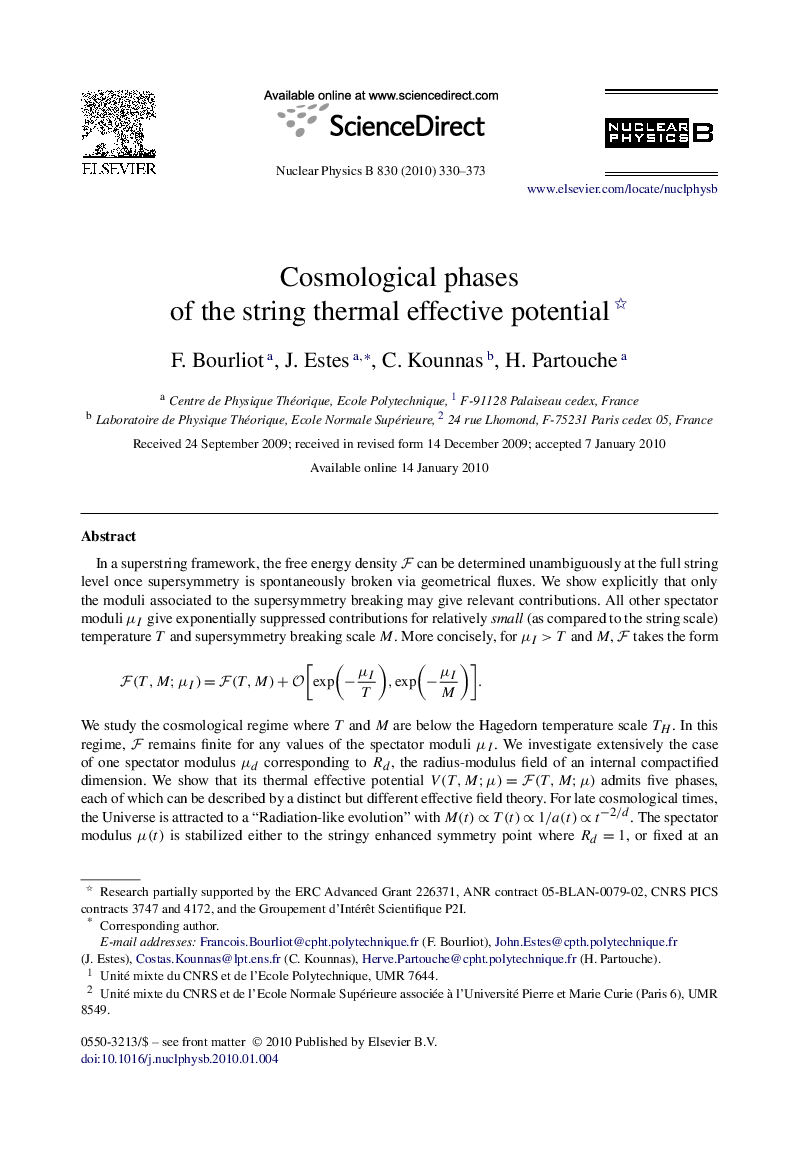| Article ID | Journal | Published Year | Pages | File Type |
|---|---|---|---|---|
| 1841473 | Nuclear Physics B | 2010 | 44 Pages |
Abstract
In a superstring framework, the free energy density F can be determined unambiguously at the full string level once supersymmetry is spontaneously broken via geometrical fluxes. We show explicitly that only the moduli associated to the supersymmetry breaking may give relevant contributions. All other spectator moduli μI give exponentially suppressed contributions for relatively small (as compared to the string scale) temperature T and supersymmetry breaking scale M. More concisely, for μI>T and M, F takes the formF(T,M;μI)=F(T,M)+O[exp(âμIT),exp(âμIM)]. We study the cosmological regime where T and M are below the Hagedorn temperature scale TH. In this regime, F remains finite for any values of the spectator moduli μI. We investigate extensively the case of one spectator modulus μd corresponding to Rd, the radius-modulus field of an internal compactified dimension. We show that its thermal effective potential V(T,M;μ)=F(T,M;μ) admits five phases, each of which can be described by a distinct but different effective field theory. For late cosmological times, the Universe is attracted to a “Radiation-like evolution” with M(t)âT(t)â1/a(t)âtâ2/d. The spectator modulus μ(t) is stabilized either to the stringy enhanced symmetry point where Rd=1, or fixed at an arbitrary constant μ0>T,M. For arbitrary boundary conditions at some initial time, tE, μ(t) may pass through more than one effective field theory phase before its final attraction.
Related Topics
Physical Sciences and Engineering
Mathematics
Mathematical Physics
Authors
F. Bourliot, J. Estes, C. Kounnas, H. Partouche,
